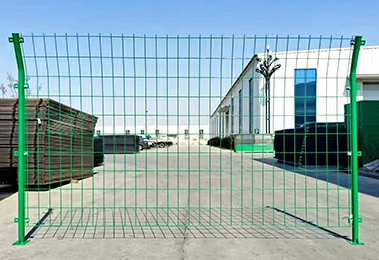 TEL:
+86-13102802206
TEL:
+86-13102802206
 Email:
fencenetting@china.com
Email:
fencenetting@china.com
 Language
Language
 TEL:
+86-13102802206
TEL:
+86-13102802206
 Email:
fencenetting@china.com
Email:
fencenetting@china.com
 Language
Language


Barbed Wire and Horses A Tale of Resilience and Change
In the vast expanse of the American West, where the skies stretch infinitely and the land seems to go on forever, two symbols have become emblematic of the region's rugged character barbed wire and horses
. Both embody the spirit of resilience, adaptation, and the profound connection between humans and the land.The invention of barbed wire in the late 19th century revolutionized the way ranchers contained their livestock. Before its introduction, open-range ranching was the norm, where cattle roamed free across the plains. This system, while seemingly idyllic, posed significant challenges. Cattle often wandered onto other ranches, leading to disputes and conflicts among ranchers. The arrival of barbed wire changed everything. It not only provided an effective means of fencing but also marked the beginning of a new era in ranching culture.
Barbed wire became the backbone of the ranching industry. Its sharp, twisted strands created a formidable barrier, allowing ranchers to delineate their land and protect their livestock. As fence lines crisscrossed the plains, the once-free roaming of cattle came to an end, giving rise to the age of enclosed ranching. This transformation brought with it new challenges and opportunities, reshaping the landscape and the lives of those who depended on it.
Alongside barbed wire, horses played a critical role in this evolving ranching world. Horses had long been integral to the daily operations of ranchers, serving as vital partners in herding cattle and navigating the vast terrains. As barbed wire fences defined property lines, the role of horses became more pronounced. Ranchers relied on their steeds not only to manage livestock but also to patrol their lands, ensuring that barbed wire was intact and livestock were secure. The image of a cowboy on horseback, silhouetted against a sunset, became deeply ingrained in American folklore, symbolizing freedom and the untamed spirit of the frontier.

Horses, with their grace and power, captured the hearts of many. They became more than just tools for ranchers; they were companions who shared in the daily trials and triumphs of ranch life. The bond between a cowboy and their horse is one built on trust, understanding, and teamwork. This mutual reliance highlights the interdependence inherent in the lives of those who work the land.
However, the story of barbed wire and horses is not solely one of tradition; it is also a tale of adaptation and survival in the face of change. As the 20th century dawned, technological advancements began to reshape agriculture and livestock management. Tractors and trucks started to replace horses as primary tools for ranching. Similarly, synthetic fencing materials emerged, challenging the dominance of traditional barbed wire. Yet, even amidst these changes, the enduring legacy of both barbed wire and horses remains ever-present.
Today, while the landscape of ranching continues to evolve, the lessons learned from the past hold value. Barbed wire and horses are reminders of a time when resilience and adaptability were crucial for survival in the unforgiving terrain of the West. They represent the spirit of those who faced hardships, persevered through challenges, and built a way of life that continues to inspire generations.
In a world moving ever faster towards modernization, the stories of barbed wire and horses remind us of the tenacity required to navigate change and the profound connections we forge with the land and the creatures within it. As we reflect on this unique duo, we are prompted to appreciate not just the history they represent, but also the lessons they impart about resilience, partnership, and the enduring spirit of the American West.